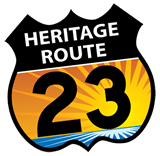Fig. 1. Autumn Olive end of twig showing the alternate pattern of buds (leaves, flowers) and the small pimply scales.
Fig. 2. Autumn Olive terminal bud showing it’s “hooded” nature as well as the pimply-looking minute scales.
Fig. 3. Autumn Olive showing general leaf shape and leaves occurring in alternate clusters.
Fig. 4. Autumn Olive general leaf shape and buds.
Fig. 5 Autumn Olive showing buds and the silver-ish underside of leaves.
Fig. 6. Autumn Olive showing a yellow flower, several buds, including two buds just above the flower, and the scale-y nature of the flowers, buds, leaves, and twigs.
Fig. 7. Autumn Olive thorns which occur to some extent on older twigs.
This information is basic by design and does not include total botanical information about each species (kind of tree). Rather, only more or less easily observable features, mostly throughout the seasons, of each numbered tree in the Alabaster Bike Path-Native Tree Arboretum (ABP-NTA) are listed. Some of the species have distinctive flowers and fruits which are listed; however, many trees have years of heavy flowering / fruiting and years of little or no flowering / fruiting. Because all natural populations have variation, it is best to look at several examples of each characteristic. All photos (except where noted) and all text by sczaika. Historical uses from Hough, R.B. The Wood Book. Royal Botanical Gardens. The preeminent classic botanical source for Michigan (mostly native) Trees is Barnes, B. V. and W. H. Wagner, Jr. 2004. Michigan Trees: A Guide to the Trees of Michigan and the Great Lakes Region. The University of Michigan Press. A supplemental resource is Kershaw, L. 2006. Trees of Michigan including Tall Shrubs. Lone Pine Publishing International. A useful field guide is Tekiela, S. 2002. Trees of Michigan Field Guide. Adventure Publications, Inc. Cambridge, MN







